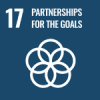Dieng Plateau tourist attractions are regionally distributed in two districts, namely Banjarnegara and Wonosobo. Hence, it is not surprising that the two local governments initiate to make Dieng a source of income.
Dr. Destha Titi Raharjana, S.Sos., M.Si, a researcher at the UGM Center for Tourism Studies, stated that there had been so many actors that have diverse roles and interests in Dieng. This condition seems to create a tug-of-war and head up to management complexity.
“It is undeniable that Dieng’s attractiveness until now is still able to fascinate tourists to come, including during new normal. It is because the tourism development in the Dieng Plateau has been recognized,” she said on Tuesday night (18/11) during series #3 of the National Seminar on Indonesian Tourism in Various Perspectives entitled “Dieng Plateau: Unraveling the Tangle Yarns of Tourism Management”.
Dieng Plateau is located at the height of not less than 2,100 masl. Since the colonial period, the Dieng Plateau has become a place of recreation. One of the attractions that invite tourists is the cold climate factor.
According to Desta, the falling of “dew,” a type of snowflake, is one of the unique charms that can only be found, especially in the months of July-August. Also, there are other natural potentials, such as Telaga Warna, Sikidang Crater, Geothermal, or hot springs are complementary menus for traveling in Dieng.
“Seeing from cultural aspects, we can still find myths or rituals of cutting dreadlocks, which have been covered as commodities. While from the destination point of view, Dieng Plateau has a full potential with a specific nature, culture, and uniqueness,” she said.
Destha assessed that the community’s response to Dieng tourism is pretty good, including processing agricultural products, developing arts, becoming tour guides, building homestays, and organizing cultural events, such as the Dieng Culture Festival. Unluckily, not all the Dieng Plateau villages take part in the tourism economy. The majority of residents are still managing agriculture, especially potatoes.
From the existing data, Destha added that there had been fluctuations in Dieng’s tourist visits by foreign guests, which can be used as material to assess Dieng’s sustainability. In 1970 – 1990, there was a significant increase in foreign tourist visits in Dieng. At that time, the vegetation and environmental ecosystem conditions were still well-preserved, and some agricultural lands had not been used.
Between 1990 and 2000, a decrease in visits began to appear, and many environmental crises existed. At that time, Dieng Plateau experienced a less positive rating given by many connoisseurs of Dieng Plateau.
“In 2000 – 2010, there were efforts of awareness, slow but sure. The Dieng community was no longer massively exploiting their land for potato crops. They even had two professions. Besides being farmers, they also became providers of tourism services,” he explained.
Destha revealed, from 2010 onwards, it is speculated that there is an increase in tourists to Dieng because it is supported by Information Technology and diversification of cultural attractions. Cultural events organized by the community have the potential to increase the tourism brand in Dieng.
Destha said that it is necessary to enhance Dieng tourism’s development to maintain its sustainability collaboratively. The conflict of interest between two districts, namely Wonosobo and Banjarnegara, should be overcome by strengthening the Central Java provincial government to make tourism management in the form of a Dieng Tourism Board.
“Throughout the Dieng Tourism Board, all parties can be united and develop tourism destinations and industries in Dieng. Improve infrastructure and environmental control, human resources, and institutional development. Therefore, we should not have seen Dieng partially, but how we can see it being developed collaboratively,” he said.
In the webinar held by the UGM Postgraduate School Tourism Studies Program, Marsis Sutopo as discussant as a National Cultural Heritage Assessor, added that the Ministry of Education and Culture had appointed Dieng as a National Cultural Heritage Area.
He also added that one thing to find a way out of Dieng’s tourism management in the future is by pulling together all stakeholders, including the government, society, universities, and other parties. They are expected to work collaboratively to create a kind of tourism management body in Dieng.
“As said earlier, through Dieng Tourism Board, tourism management in Dieng would be more organized and conditional so that visitors would get unforgettable experiences in Dieng that do not exist in other areas,” he added.
Source: https://ugm.ac.id/id/berita/20374-perlu-upaya-kolaboratif-kelola-pariwisata-dieng



